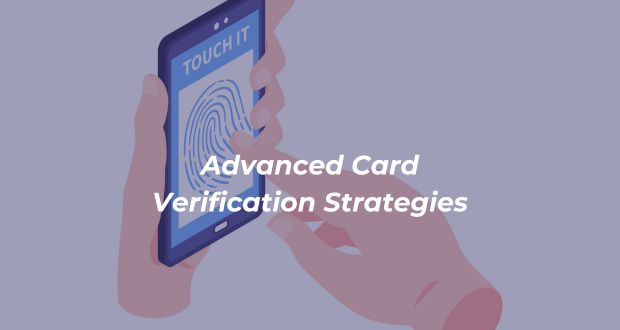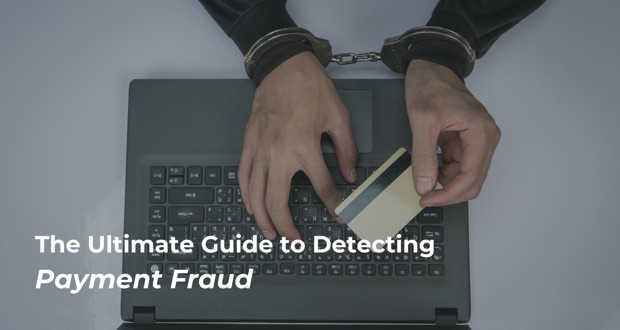Understanding Card Verification
Card verification is a critical process in ensuring the security of payment transactions. Let’s delve into its definition and explore its pivotal role:
Definition and Role of Card Verification
Card verification refers to the procedures used to validate the authenticity of payment cards during transactions. It involves verifying essential card details, such as the card number, expiration date, and Card Verification Value (CVV). The primary goals of card verification are:
Authentication: Techniques include checking basic card details (number, expiration, CVV) against the issuing bank's records. For card-not-present transactions (e.g., online), additional steps may be required:
- Billing address verification ensures it matches the bank's records.
- Address Verification Service (AVS) provides a more in-depth check of billing address and ZIP code.
- CVV2/CVC2, a unique code on the card's back, adds security for online transactions.
- 3D Secure (3DS) redirects users to their bank's secure website for verification through passwords or one-time codes.
Fraud Prevention: Ongoing monitoring for suspicious activity includes:
- Tracking purchase history for unusual patterns like large purchases, unfamiliar locations, or sudden spikes in frequency.
- Velocity checks limit the number of transactions allowed within a specific timeframe.
- Negative file lists compare card details against databases of known lost, stolen, or fraudulent cards.
- Machine learning and AI algorithms identify patterns and anomalies that might indicate fraud.
Card Testing Fraud and Its Impact
Card testing fraud occurs when cybercriminals use stolen or randomly generated card details to make small transactions. These tests verify the card's validity before attempting larger fraudulent purchases. These seemingly insignificant purchases can trigger a chain reaction of problems for your business:
Financial Losses: Card testing fraud can lead to a double whammy on your finances. First, you're liable for chargebacks whenever customers dispute these unauthorized transactions. This means you lose the revenue from the fraudulent sale and may even have to pay additional fees to the issuing bank. Even if your payment processor declines the fraudulent transactions, you might still incur processing fees for each attempted sale. These seemingly small fees can quickly add up, especially if you're bombarded with high test transactions.
Increased Scrutiny: High chargeback rates are a red flag for payment processors. They signal that your business might be a target for fraud, which can lead to increased scrutiny of your transactions. This can make getting approved for a merchant account more challenging or lead to higher processing fees. In the worst-case scenario, the payment processor might terminate your service entirely if your chargeback rate becomes too high. This can be a major disruption to your business, forcing you to find a new payment processing solution and potentially impacting your ability to accept online payments.
Damaged Reputation: Frequent fraud can erode customer trust in your brand. When customers discover unauthorized charges on their credit card statements, they'll likely blame the merchant where the fraudulent transaction occurred. This can damage your reputation and lead to lost sales. Customers who have had a negative experience due to fraud might be hesitant to shop with you again, and they might even share their experience with others, deterring potential customers. Building trust with customers takes time and effort; card testing fraud can quickly unravel that trust.
Advanced Card Verification Techniques
In this section, we’ll explore advanced strategies to enhance card verification and fortify your payment systems against fraud:
Cardholder Authentication
Multi-factor authentication (MFA): MFA adds an extra layer of security by requiring users to provide multiple forms of identification. Common factors include something the user knows (password), something they have (a mobile device or token), and something they are (biometrics like fingerprints or facial recognition). Continuous monitoring triggers MFA when abnormal behavior is detected, ensuring real-time protection.
Payment Security Standards
Compliance requirements (e.g., PCI DSS): The Payment Card Industry Data Security Standard (PCI DSS) outlines security measures for handling cardholder data. Compliance with these standards is crucial for maintaining secure payment processes. Businesses must adhere to PCI DSS guidelines to protect sensitive information and prevent breaches.
Fraud Detection Algorithms
Machine learning-based algorithms: These algorithms analyze transaction patterns, historical data, and behavioral anomalies to identify potentially fraudulent activity. By continuously learning and adapting, they balance minimizing false positives (flagging legitimate transactions as suspicious) and maintaining robust security.
Tokenization: Role in Data Security
Tokenization replaces sensitive card data (such as the primary account number) with a unique token. This token is meaningless to attackers and can’t be reverse-engineered to obtain the original card details.
Role in Security
Data Protection: Tokenization ensures that sensitive information is never stored in raw form. Even if a breach occurs, the stolen tokens are useless without the corresponding decryption keys.
- Fort Knox for Card Details: Tokenization acts like a digital vault for sensitive card information. Credit card numbers are replaced with unique, random tokens with no inherent value to hackers. Even if a data breach occurs, the stolen tokens are useless without the corresponding decryption keys, which are securely stored separately. This significantly reduces the risk of stolen card information being used for fraudulent purposes.
- Peace of Mind for Merchants: By eliminating the need to store actual card numbers on their systems, merchants can significantly reduce their compliance burden with data security regulations like PCI DSS (Payment Card Industry Data Security Standard). This translates to less time and resources spent on security audits and potential fines for non-compliance.
Reducing Attack Surface: By eliminating the need to store actual card numbers, merchants reduce their exposure to potential breaches.
- Shrinking the Target: Imagine a hacker trying to rob a bank. Traditionally, merchants storing actual card numbers represent a large, tempting vault. Tokenization shrinks this vault down to a collection of meaningless tokens. Hackers have a much smaller target to aim for, making it significantly more difficult to steal valuable data.
- Proactive Defense: Tokenization goes beyond simply reacting to breaches. By eliminating the presence of sensitive data, it creates a proactive defense against cyberattacks. Hackers are less likely to target merchants who don't store the information they're after.
Cross-Channel Consistency: Tokens can be used consistently across various channels (e.g., online, mobile, in-store) without compromising security.
- Seamless Security Across Platforms: Tokenization allows customers to securely store their payment information on one device (phone, computer) and use it seamlessly across different channels (online store, mobile app, physical store with tap-to-pay). This creates a smooth and convenient payment experience for customers without compromising security on any platform.
- Unified Security Framework: Merchants can simplify their security protocols by using a single tokenization process across all channels. This reduces the complexity of managing security for different platforms and ensures consistent protection throughout the customer journey.
Chargeback Prevention Strategies
Chargebacks occur when customers dispute transactions, leading to merchants incurring financial losses. Effective prevention strategies include:
Transaction Documentation: Maintain detailed records of transactions, including receipts, shipping information, and customer communication.
- Building Your War Chest: Detailed transaction records are your ammunition in the fight against chargebacks. Keep receipts, shipping information, and all customer communication readily available. This documentation proves the transaction's legitimacy and strengthens your case when responding to a dispute.
- Going Digital (Securely): Paperwork is good, but secure digital records are even better. Invest in a system that allows you to store transaction details electronically in a way that's easily accessible for retrieval. This ensures your documentation is safe from physical damage and readily available when needed.
Clear Refund Policies: Transparent refund policies reduce misunderstandings and prevent unnecessary chargebacks.
- Transparency is Key: Clearly outline your refund policy on your website, during checkout, and on receipts. This policy should be easy to understand and readily available to customers. Specifying what constitutes a valid refund and your timeframe for processing returns helps manage customer expectations and reduces confusion.
- Addressing Common Concerns: Be upfront about any restocking fees or return limitations. Clearly outlining these details in your refund policy prevents misunderstandings that could lead to chargebacks.
Fraud Detection Tools: Use algorithms to identify suspicious transactions early and prevent chargebacks resulting from fraudulent activity.
- Fighting Fire with Tech: Fraudulent transactions often exhibit red flags, but spotting them can be challenging. Invest in fraud detection tools that use sophisticated algorithms to analyze purchase patterns and identify suspicious activity. These tools can help you flag potentially fraudulent transactions before they are completed, preventing chargebacks altogether.
- Always Evolving: Fraudsters are constantly developing new tactics. Choose fraud detection tools that are regularly updated with the latest information on fraudulent activity. This ensures your defenses stay ahead of the curve and can adapt to evolving threats.
Customer Communication: Promptly address customer concerns to prevent disputes from escalating to chargebacks.
- Nip it in the Bud: Address customer concerns promptly and professionally. The sooner you can resolve an issue with a customer, the less likely they are to file a chargeback. Offer multiple channels for customer communication (phone, email, live chat) to make it easy for customers to reach you.
- Proactive Outreach: In some cases, a proactive approach can be beneficial. If you notice a customer hasn't received their order or appears confused about a charge, contact them directly. This demonstrates your commitment to customer satisfaction and can help resolve issues before they escalate into chargebacks.
Real-Time Monitoring: Importance of Prompt Anomaly Detection
Real-time monitoring continuously analyzes transaction data for anomalies. Its benefits include:
Immediate Alerts
Imagine a burglar setting off an alarm the moment they break a window. Real-time transaction monitoring functions similarly. By constantly analyzing data, it detects suspicious activity and triggers instant alerts. This allows you to take swift action, like blocking the transaction or contacting the customer for verification, before any financial loss occurs. Traditional fraud detection methods might only analyze transactions after completion, giving fraudsters a window of opportunity. Real-time monitoring eliminates this delay, enabling a faster response and stronger defense strategy.
Fraud Prevention
Real-time monitoring goes beyond reacting to fraud attempts. Identifying suspicious patterns and high-risk behavior helps prevent fraudulent transactions from happening in the first place. This proactive approach saves your business money and protects your customers from the inconvenience of compromised accounts. Additionally, real-time monitoring allows for targeted intervention. For low-risk anomalies, you may require additional customer verification. You can take more immediate action for high-risk transactions, such as blocking the payment entirely. This targeted approach ensures you strike the right balance between security and customer experience.
Adaptability
Fraudsters constantly evolve their tactics, and traditional methods might struggle to keep pace. Real-time monitoring systems are designed to be adaptable. They can be continuously updated with the latest information on emerging fraud schemes, ensuring your defenses stay ahead of the curve and effectively combat even the newest threats. As online commerce changes, real-time monitoring allows your business to adapt to new payment methods and technologies without compromising security. By providing a flexible and adaptable security solution, real-time monitoring helps future-proof your business against evolving fraud threats.
TrustDecision’s Identity Verification
TrustDecision's Identity Verification solution is a comprehensive suite of tools designed to safeguard your payment systems. Let's delve into its key features and how they work together to create a secure environment:
Frictionless Onboarding:
- Streamlined Sign-Ups: Imagine a new customer effortlessly creating an account. TrustDecision's onboarding process prioritizes ease of use. While users go through a smooth sign-up, TrustDecision is conducting a vital security check behind the scenes.
- Background Checks on Autopilot: TrustDecision meticulously verifies email addresses, phone numbers, and IP addresses during onboarding. This helps identify suspicious registrations that could indicate fraudulent activity without slowing down the user experience.
- Spam Prevention for a Clean Customer Base: Ever get annoyed by spam emails or fake accounts? TrustDecision's system can identify irregular registration patterns that might indicate spam attempts. This helps prevent these unwanted entries, keeping your user base clean and legitimate.
Smart Multi-Factor Authentication (MFA):
- Adaptable Security: TrustDecision's MFA isn't a one-size-fits-all solution. The system continuously monitors user activity and can dynamically adjust the authentication requirements. For transactions with normal patterns, a simple verification step might suffice. However, if suspicious activity is detected, the system can trigger additional authentication layers, such as fingerprint scans or one-time codes, to ensure extra security.
- Multi-Layered Defense: Imagine having multiple security checkpoints to access a vault. TrustDecision's MFA employs a similar approach. Leveraging CAPTCHAs, SMS verification, and other techniques create a robust defense system that makes it significantly harder for unauthorized users to access your system.
Precision and Reduced False Positives:
- Smarter Fraud Detection: False positives can significantly annoy legitimate users. TrustDecision tackles this challenge with sophisticated fraud detection algorithms. These algorithms are trained to identify suspicious patterns accurately, minimizing the chance of incorrectly flagging legitimate users.
- Balancing Security and Convenience: Security shouldn't come at the expense of a smooth user experience. TrustDecision understands this. Their system is designed to strike the right balance, ensuring robust security measures are in place without creating unnecessary hurdles or delays for legitimate users.
Safe eKYC (Know Your Customer):
- Global Reach, Local Expertise: Your customers might come from anywhere in today's globalized world. TrustDecision's system can validate a wide range of documents used for identity verification purposes around the world, ensuring consistency and accuracy regardless of a user's location.
- Cutting-Edge Techniques to Combat Evolving Threats: Fraudsters are constantly developing new tactics. TrustDecision stays ahead of the curve by employing cutting-edge technologies like Optical Character Recognition (OCR) to extract data from documents, liveness detection to ensure users are real people, and facial comparison to verify user identities. This multi-pronged approach makes it significantly harder for fraudsters to bypass security measures.
Conclusion
Implementing advanced card verification strategies is crucial for maintaining secure payment systems. TrustDecision’s Identity Verification solution offers a comprehensive approach, combining frictionless onboarding, smart multi-factor authentication, precision, and compliance management. By prioritizing security and user experience, businesses can strengthen their payment processes and build customer trust.





.jpeg)

.jpeg)





